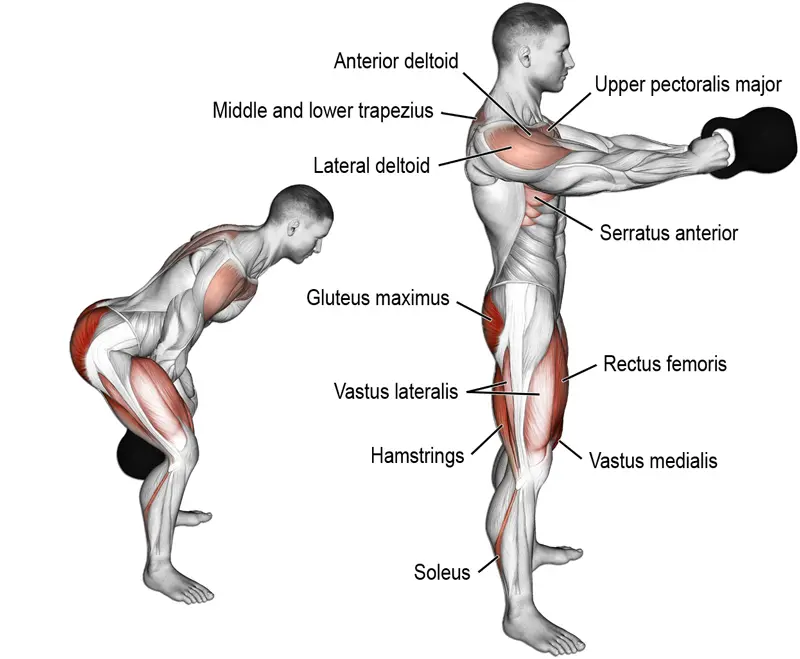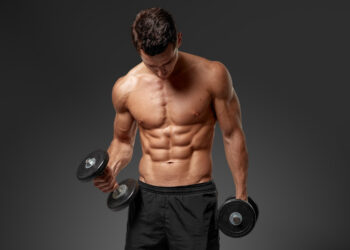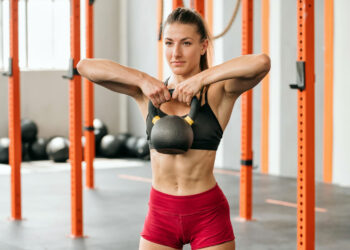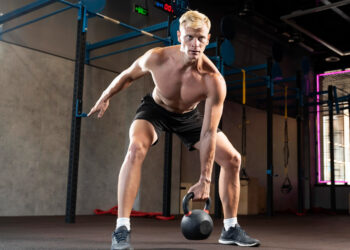Every exerciser wants to get the best results from their workouts. After all, training is hard work, so why would you want to waste your time and energy on anything that isn’t as productive as possible?
For many, this leads to questions like “should I work out with free weights or machines?” or “should I do a split or full-body workout?”
Another question you may find yourself asking is, “which is better – dumbbells or kettlebells?” In this article, we’ll answer that last question for you so you can choose the right training tool for your goals.
Dumbbells vs. Kettlebells – the main differences
While it’s unlikely you’ll ever inadvertently mistake a dumbbell for a kettlebell, it’s worth summarizing their characteristics and differences right from the start. In many cases, knowing these differences will make choosing the right option much easier.

Let’s start with dumbbells…
Dumbbells were invented so that 18th century English churchgoers could practice their bell-ringing skills silently and without disturbing the people nearby. Bells without their internal workings were literally ‘dumb’ ‘bells,’ dumb being an old-fashioned word for silent (1).
Level Up Your Fitness: Join our 💪 strong community in Fitness Volt Newsletter. Get daily inspiration, expert-backed workouts, nutrition tips, the latest in strength sports, and the support you need to reach your goals. Subscribe for free!
Modern dumbbells are short bars with a weight on each end. They usually have knurled or textured handles to make them easier to grip, and most exercises involve holding the dumbbell in the middle of the handle, which helps ensure the weights remain balanced.
The weights themselves can be round or hexagonal, and dumbbells are available in fixed weights or adjustable versions. While gyms tend to favor fixed weight dumbbells, adjustable dumbbells are ideal for home workouts.
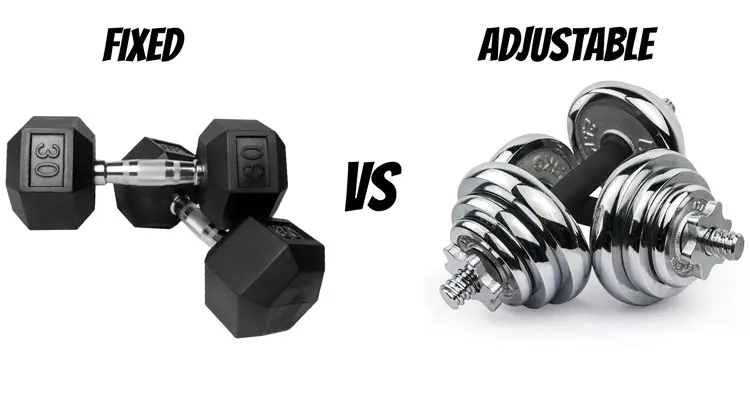
Dumbbells can be used in pairs or just one at a time. However, for building strength, using two dumbbells is usually best because you’ll be more balanced and stable, which means you’ll be able to lift heavier weights, and that should produce a better training effect.
Dumbbell weights tend to increase in small increments – such as 2.5 or 5 lbs. This is useful for progressive resistance training and means you can make your workouts gradually harder over time.
Kettlebells may pre-date dumbbells, but that’s hard to confirm because many different countries claim to have invented them. Weights with handles have been used for hundreds of years in places as far afield as Scotland, Russia, and Scandinavia. However, Russia seems to have the strongest claim to modern kettlebells, so much so that the weight of a kettlebell is often expressed in poods, which is a Russian unit of measure. One pood is about 36.1 pounds or 16.3 kilograms.

Kettlebells are spherical and have a single handle on the top. The handle resembles a horseshoe and can be gripped by the vertical “horns” or the horizontal bar. Kettlebell handles do not tend to be knurled, which makes them harder to grip but also reduces friction in your hands, which is beneficial for exercises like snatches and cleans.
Kettlebell weights tend to increase in larger jumps than dumbbells, typically 9-18 lbs./4-8 kilograms, and this may make choosing the right kettlebell for your needs a challenge. For example, if 35 lbs. is too light, and the next weight up, 44 lbs., is too heavy, which weight should you choose?
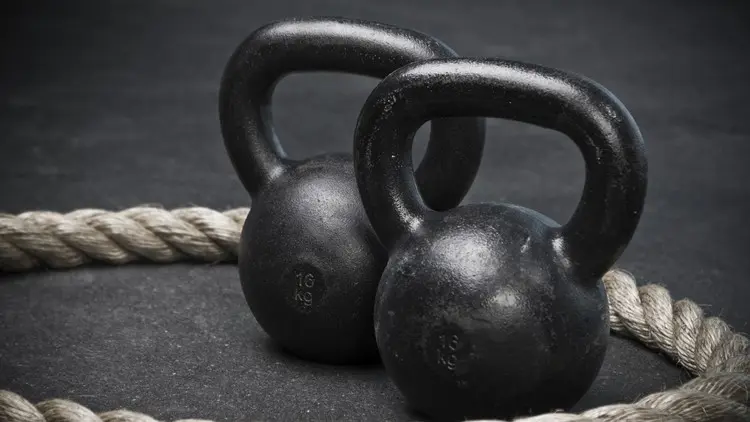
Like dumbbells, kettlebells can be used singularly or in pairs. Most kettlebells are fixed weight, but there are some adjustable and plate-loaded versions available. However, for ease of use, fixed weight kettlebells are usually best.
Because the weight is slung below the handle, kettlebells can be less stable than dumbbells, making them harder to balance for some exercises.
Kettlebells vs. Dumbbells for building muscle
If you want to build muscle, your primary weapon of choice should be dumbbells. Why? Because the weight sits nicely in your palm and directly over your wrist and forearm. This will allow you to focus all your energy on lifting and lowering whatever weight you are using, which will lead to a greater overload for your target muscles. This is especially true for pressing exercises – dumbbell bench presses and shoulder presses.
Dumbbells are also generally better for biceps curls as the weight will not roll around in your hands as you raise and lower your arms. That said, if you want a unique biceps exercise that also works your forearm, grip the top handle and keep the weight extended away from your body. This curl variation increases lever length and makes a light kettlebell feel very heavy.
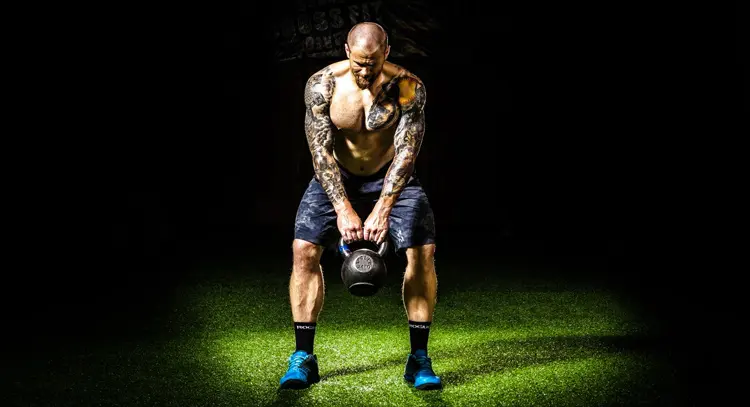
For bent over rows, kettlebells and dumbbells are mostly interchangeable, and you could use either to work your lats. Remember, though, kettlebells tend to have smooth handles so your grip could fail before your back if you have damp palms.
Studies reveal that kettlebells affect target muscles slightly differently to dumbbells in the overhead press, mainly because the weight’s center of gravity is different for kettlebells compared to dumbbells. However, the differences in muscle activation were minimal, and the study only tested two muscles – anterior deltoid and pectoralis major (2). As overhead pressing is primarily a deltoid exercise, this seems like an odd choice of muscles to test and didn’t really reveal any useful information.
Bottom line: Dumbbells are generally best for muscle building because they are easier to handle and more balanced and stable. That said, for some exercises, kettlebells are just as useable, but they don’t offer any significant advantages.
Level Up Your Fitness: Join our 💪 strong community in Fitness Volt Newsletter. Get daily inspiration, expert-backed workouts, nutrition tips, the latest in strength sports, and the support you need to reach your goals. Subscribe for free!
Kettlebells vs. Dumbbells for building strength
You can use kettlebells and dumbbells to build strength – providing whatever you are lifting is heavy enough to overload your muscles. Most kettlebell exercises are compound in nature, which means they involve multiple joints and muscle groups all working together, which is arguably the best way to build strength.
However, if you are very strong (like stronger than most of the population), neither dumbbells nor kettlebells are your best choice because they won’t be heavy enough. Training with barbells will probably be more productive.
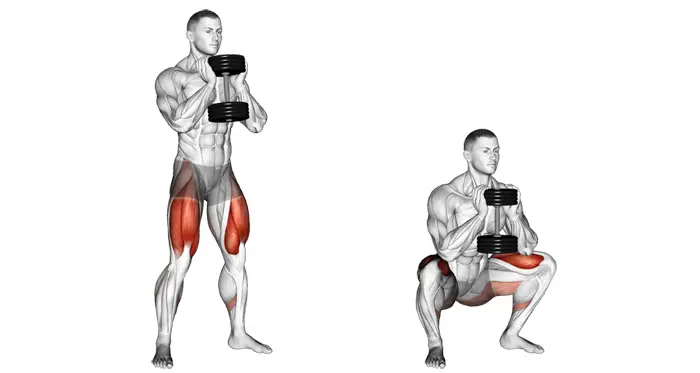
For example, goblet squats, which can be done with both dumbbells and kettlebells, are a good leg exercise but won’t build strength like barbell squats can. Kettlebells (and dumbbells for that matter) tend not to exceed 100-150 lbs. in weight. This will limit strength development. In contrast, you can load a barbell with as much weight as you need. While you may outgrow your heaviest kettlebells or dumbbells, you will never get so strong that you cannot continue barbell training.
Bottom line: Kettlebells and dumbbells can both be used to build strength and are similarly effective. However, barbells are probably your best choice if strength is your main priority as they allow you to lift more weight and, combined with a bench and power rack, will provide a safer workout.
Kettlebells vs. Dumbbells for increasing muscle power
Power is your ability to generate force quickly. It’s the difference between a slow, heavy squat and a squat jump – the movement is broadly the same, but the speed of movement is very different.
Most dumbbell exercises are performed slowly and with control. This is good for building muscle and strength, but less useful for power. In contrast, while some kettlebell exercises are performed slowly, a lot are done explosively, making them better for developing power (3). Examples of kettlebell power exercises include:
- Kettlebell swings
- Kettlebell sumo deadlift high pulls
- Kettlebell snatches
- Kettlebell cleans
- Kettlebell jerks
While you could conceivably do these exercises with dumbbells, they’re better with kettlebells. The un-knurled handles and offset load mean that snatches, swings, and cleans are much more comfortable, and that makes lifting heavier weights easier. The smooth handles won’t tear up your hands as dumbbells can, and the offset handle on kettlebells allows you to flip the weight over as you lift it overhead, making for a smoother, snappier movement.
It’s also worth noting that kettlebell power exercises are usually easier to learn than their barbell equivalents. Barbell cleans and snatches are hard to master and can be dangerous too. The same exercises are much easier to learn with kettlebells.
Bottom line: Kettlebells are better than dumbbells for power development. Also, because of their one-piece design, you may be able to use your kettlebells for throwing exercises. After all, they are really only cannonballs with a handle. However, make sure your kettlebell is strong enough to survive being thrown, and only do throwing exercises outside on grass or dirt.
Kettlebells vs. Dumbbells for cardio and fat burning
There are several ways you can use weights for cardio and fat burning, including High-Intensity Interval Training (HIIT), circuit training, and complexes. Because all of these methods tend to involve light to moderate weights and moderate to high reps, you can use kettlebells or dumbbells with very similar results.
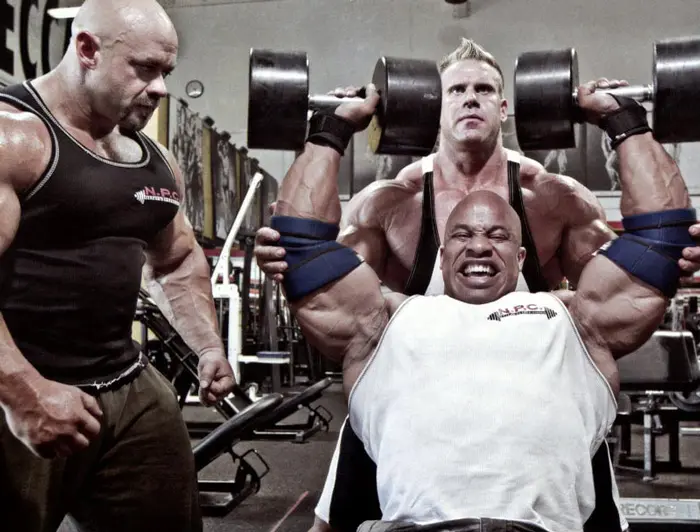
If we had to choose between dumbbells and kettlebells, we’d probably go for kettlebells simply because they allow for a more natural “flow” between exercises. You can even swap hands from left to right without stopping because the handles are wider. Kettlebell exercises like swings and snatches more comfortable than the same moves done with dumbbells. But, if all you’ve got is dumbbells, you can definitely use them to get a great cardio and fat burning workout.
Bottom line: Kettlebells are dumbbells are similarly effective for cardio and fat burning. Still, kettlebells may have a small edge here because they are easier to use for swings, snatches, and cleans.
FAQs
Do you have any questions about dumbbells and kettlebells? We’ve got answers! If you can’t find the information you are looking for below, drop us a line in the comments section, and we’ll get back to you as soon as we can.
Do I have to choose between kettlebells or dumbbells?
Absolutely not! You don’t have to be a “kettlebell guy” or a “dumbbell girl;” you can (and probably should) use both. Kettlebells and dumbbells can help you reach your fitness goals, and there is no reason you can’t use both of them – even in the same workout. Use the best tool for the job, which sometimes will be a dumbbell, and other times will be a kettlebell.
Can I effectively workout with just one kettlebell or dumbbell?
While such a limited amount of exercise equipment is not ideal, you can still get a good workout with just one weight. In fact, with a little imagination, you should be able to train every muscle in your body despite only having a single dumbbell or kettlebell. Not sure where to start? Try these workouts.
Which are better for beginners – dumbbells or kettlebells?
There really isn’t much in it, so use whichever you have access too. For some exercises, kettlebells are easier to master, and for others, dumbbells are more straightforward. However, the differences are so small it just doesn’t matter very much. The main advantage of dumbbells is that they tend to offer smaller weight increments, so you may find it easier to fine-tune the difficulty of your workout than if you use kettlebells.
Which weight kettlebell should I buy?
If you work out at home, you may want to buy just one or two kettlebells. After all, they are expensive, and storing them takes up a lot of space. But what weights should you buy?
Most men should be able to get a good workout with two kettlebells – one weighing 35 pounds and one weighing 53 pounds. The lighter one is ideal for overhead presses and explosive exercises like snatches and single-arm swings. The heavier ‘bell is good for two-handed swings, goblet squats, and rows. With these two different kettlebells, you have everything you need to train your entire body and build basic strength, power, and fitness. Most women will be fine with an 18-pound and a 35-pound kettlebell.
If the weight is equal, are dumbbells and kettlebells the same?
In theory, a 35-pound dumbbell is the same as a 35-pound kettlebell, but, in reality, the weights will feel different depending on the exercise you are doing. With swings, cleans, and snatches, kettlebells tend to swing away from you, which lengthens the lever, making them feel heavier than dumbbells. But, for presses, kettlebells sit below the level of your hand, which can make them feel lighter.
Ultimately, the weight is not really that important – it’s how that weight affects your body. So long as whatever you are using is heavy enough to trigger the training response you want, it’s the right weight for you.
Wrapping up
Kettlebells and dumbbells are just tools, and you don’t need to choose between them. Both have advantages and disadvantages, and one is not necessarily better than the other. You don’t even need to choose between them; you can use both! You’ll also get good results from your workouts if you use a dumbbell for kettlebell exercises or kettlebells for dumbbell exercises.
At the end of the day, both of these tools can help you reach your fitness and muscle building goals, and application, effort, and correct programming are more important than the shape of the weight you are lifting.
References:
1 – Lexico.com: Dumb-bell definition and origin https://www.lexico.com/definition/dumb-bell
2 – PubMed: Stability of Resistance Training Implement alters EMG Activity during the Overhead Press https://www.ncbi.nlm.nih.gov/pmc/articles/PMC6033506/
3 – PubMed: Kettlebell swing training improves maximal and explosive strength https://www.ncbi.nlm.nih.gov/pubmed/22580981

